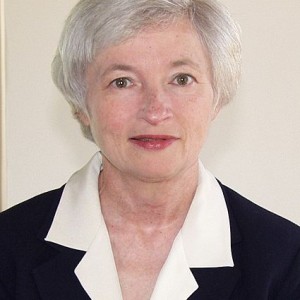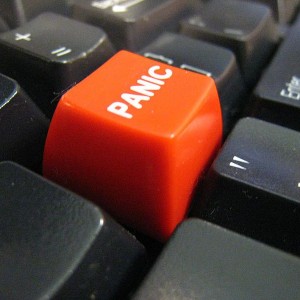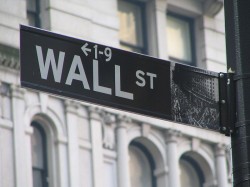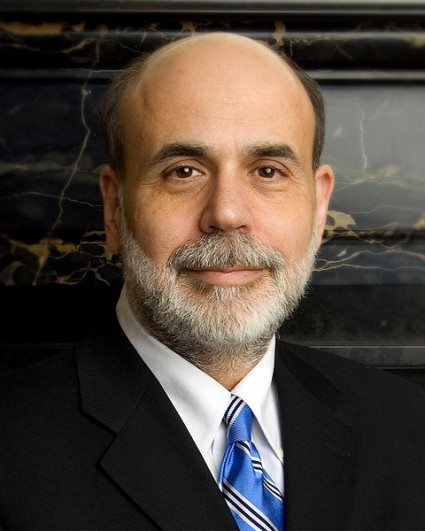 Are you ready for Janet Yellen? Wall Street wants her, the mainstream media wants her and it appears that her confirmation would be a slam dunk. She would be the first woman ever to chair the Federal Reserve, and her philosophy is that a little bit of inflation is actually good for an economy. She was reportedly the architect for many of the unprecedented monetary decisions that Ben Bernanke made during his tenure, and that has many on Wall Street and in the media very excited. Noting that we “already know that Yellen is on board with Bernanke’s easy money policies”, CNN recently even went so far as to publish a rabidly pro-Yellen article with this stunning headline: “Dear Mr. President: Name Yellen now!” But after watching what a disaster Bernanke has been, do we really want more of the same? It doesn’t really matter whether she is a woman, a man, a giant lizard or a robot, the question is whether or not she is going to continue to take us down the path to ruin that Bernanke has taken us. As I have written about so many times, the Federal Reserve is at the very heart of our economic problems, and under Bernanke the Fed has created a mammoth financial bubble unlike anything that we have ever seen before. If Yellen keeps us going down that road, financial disaster is inevitable.
Are you ready for Janet Yellen? Wall Street wants her, the mainstream media wants her and it appears that her confirmation would be a slam dunk. She would be the first woman ever to chair the Federal Reserve, and her philosophy is that a little bit of inflation is actually good for an economy. She was reportedly the architect for many of the unprecedented monetary decisions that Ben Bernanke made during his tenure, and that has many on Wall Street and in the media very excited. Noting that we “already know that Yellen is on board with Bernanke’s easy money policies”, CNN recently even went so far as to publish a rabidly pro-Yellen article with this stunning headline: “Dear Mr. President: Name Yellen now!” But after watching what a disaster Bernanke has been, do we really want more of the same? It doesn’t really matter whether she is a woman, a man, a giant lizard or a robot, the question is whether or not she is going to continue to take us down the path to ruin that Bernanke has taken us. As I have written about so many times, the Federal Reserve is at the very heart of our economic problems, and under Bernanke the Fed has created a mammoth financial bubble unlike anything that we have ever seen before. If Yellen keeps us going down that road, financial disaster is inevitable.
Sadly, Yellen is not a woman that believes in free markets. She had the following to say back in 1999…
“Will capitalist economies operate at full employment in the absence of routine intervention? Certainly not.”
Yellen believes that without the “routine intervention” of the central planners at the Fed, our economy will not produce satisfactory results.
So if you thought that Bernanke was an “interventionist”, you haven’t seen anything yet. In fact, according to Time Magazine, Yellen was continually urging Bernanke to do even more “to help stimulate the economy”…
But as the most recent financial crisis proved, a good Fed chief needs to be willing to think outside the box to achieve its goals of low, steady inflation and full employment. This is exactly what Bernanke did — using the powers of his office to launch a massive bond-buying program aimed at lowering interest rates further down the yield curve and promising to keep short-term interest rates at near zero for years. Bernanke, however, didn’t launch these programs immediately. Behind the scenes, it was reportedly Yellen who was the most forceful advocate for the Fed doing more to help stimulate the economy.
It is truly frightening to think that Yellen might turn out to be “Bernanke on steroids”.
Let’s hope that she is not the choice.
But the media is endlessly hyping her. They keep proclaiming that she has a “good track record” when it comes to forecasting future economic conditions.
Oh really?
Back in February 2007, before the housing crash and the last financial crisis, she made the following statement…
“The bottom line for housing is that the concerns we used to hear about the possibility of a devastating collapse—one that might be big enough to cause a recession in the U.S. economy—while not fully allayed have diminished. Moreover, while the future for housing activity remains uncertain, I think there is a reasonable chance that housing is in the process of stabilizing, which would mean that it would put a considerably smaller drag on the economy going forward.”
And during a speech in December 2007 she offered up this gem…
“To sum up the story on the outlook for real GDP growth, my own view is that, under appropriate monetary policy, the economy is still likely to achieve a relatively smooth adjustment path, with real GDP growth gradually returning to its roughly 2½ percent trend over the next year or so, and the unemployment rate rising only very gradually to just above its 4¾ percent sustainable level.”
And in front of the Financial Crisis Inquiry Commission in 2010 she openly admitted that she did not see the last financial crisis coming…
“For my own part,” Ms. Yellen said, “I did not see and did not appreciate what the risks were with securitization, the credit ratings agencies, the shadow banking system, the S.I.V.’s — I didn’t see any of that coming until it happened.”
So if she didn’t see the last crisis coming, will she see the next one coming?
Right now, she insists that everything is going to be just fine in our immediate future.
Do you believe her?
Meanwhile, economic warning flags are popping up all over the place. As Zero Hedge recently noted, perhaps this is why a lot of high profile candidates don’t want the Fed job. Perhaps they don’t want to be blamed for the giant economic mess that is about to happen…
With so many candidates dropping out of the race, one has to wonder why the attraction of the ‘most-powerful’ job in the world is fading. Perhaps it is not wanting to stuck between the rock of the ‘broken-market-diminishing-returns’ of moar QE and the hard place of an economy/market that is sputtering and needs moar. As Bloomberg’s Rich Yamarone notes, There’s a little known rule of thumb in the economics world: when the annual growth rate of key U.S. indicators falls below 2 percent, the economy slides into recession in the next 12 months… and more than one of them is flashing red.
But we have far bigger worries on our hands than just another recession.
Over the past several years, Fed intervention has been systematically destroying confidence in the U.S. dollar and has been making U.S. government debt less desirable. Foreigners are already starting to dump U.S. debt, and it is only a matter of time before the U.S. dollar loses its status as the de facto reserve currency of the world.
By “kicking the can down the road”, the Fed has created tremendous structural problems which are going to come back to bite us big time in the long run.
Recklessly printing money, monetizing debt and driving interest rates down to ridiculously low levels may have had some benefits in the short-term, but in the end this giant Ponzi scheme is going to collapse in spectacular fashion. The following is how James Howard Kunstler puts it…
The Fed can only pretend to try to get out of this self-created hell-hole. The stock market is a proxy for the economy and a handful of giant banks are proxies for the American public, and all they’ve really got going is a hideous high-frequency churn of trades in conjectural debentures that pretend to represent something hidden in the caboose of a choo-choo train of wished-for value — and hardly anyone in the nation, including those with multiple graduate degrees in abstruse crypto-sciences, can even pretend to understand it all.
When reality crosses the finish line ahead of poor, exhausted Mr. Bernanke, havoc must ensue. All the artificial props fall away and the so-called American economy is revealed for what it is: a surreal landscape of ruin with nothing left but salvage value. Very few people will get a living off of the salvage operations, and there will be fights and skirmishes everywhere by one gang or another for control of the pickings. The utility of money itself may be bygone, along with the legitimacy of anyone or anything claiming institutional authority. This is what comes of all attempts to get something for nothing.
The American people deserve to know the truth.
The Fed is not our “savior”. The truth is that the Fed is the primary cause of many of our biggest economic problems. For much more on this, please see my previous article entitled “25 Fast Facts About The Federal Reserve – Please Share With Everyone You Know“.
Unfortunately, Wall Street and the mainstream media love the Fed and they appear to very much love Janet Yellen.
Yellen would be an absolutely horrifying choice for Fed Chairman, but so would any of the other names that have been floated.
America has embraced the foolishness of the financial central planners at the Federal Reserve, and in the end we will all pay a great price for that.


